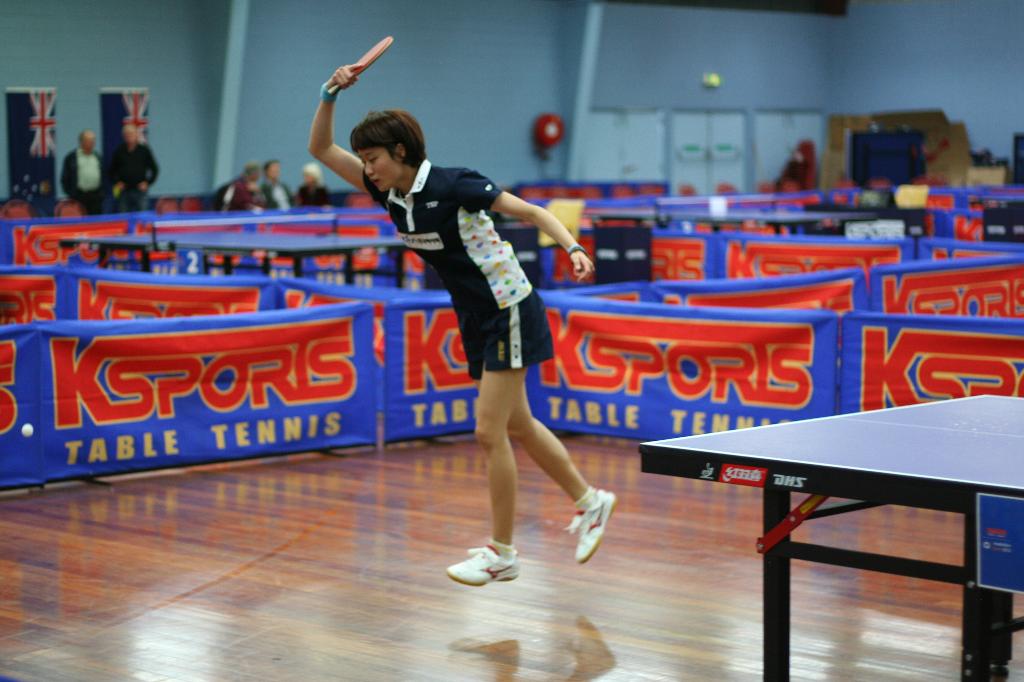When the light finally dawns…
Recently I wrote about an ‘Aha!’ moment I had when watching a video of myself playing table tennis at the Australian Open, where I discovered problems with my stance that were affecting my ability to hit a powerful forehand loop. I concluded the article by advising readers to look for a simple answer to their problems before seeking more complex solutions. Well, I’ve since had another ‘Aha!’ moment, and I’ve once again learned the hard way another important fact that I’d like to share with you all:
When looking for solutions to your problem, don’t stop looking when you find the first cause – there may be more than one reason!

© Greg Letts
Here’s the background on how I discovered this fact for myself. Since I’ve widened my stance, I have been hitting my forehand loop much better, and I have been very pleased with with myself, giving myself a big pat on the back. My forehand loop against backspin has been working very well, and the only thing I wasn’t entirely happy with is my loop against a block or loop, where I still have a tendency to hit the ball upwards a little too much, with too much height over the net. I figured I must be narrowing my stance a little without realizing it, causing me to hit more upwards again. So I kept trying to keep my feet wide, but I was still having difficulty getting on top of this problem of keeping my second loop down!
My ‘Aha!’ moment occurred when I was watching some video of China’s Wang Liqin playing Hong Kong’s Li Ching at the 2005 World Championships. The video showed some slow motion side-on footage of Wang Liqin opening up with a loop, then relooping Li Ching’s topspin. On his reloop, Wang had a great wide stance, but what was immediately apparent from this side-on angle was that he was swinging in a roughly 45 degree line to perform his reloop, with a semi-closed racket face. At this point the light came on in my brain, and I quickly double checked the video, then dug out an old training video of Kong Linghui (whose technique I admire greatly). Looking at Kong looping against block and topspin from side-on, that same roughly 45 degree swing was again obvious. Comparing it to videos of my own humble loop, I could see that I was looping against blocks and topspin at at angle closer to 70 degrees. Could this be another reason why my loops had lacked power, and why I was still having problems with lifting my second loop too much?
Thinking it over, it made sense to conclude my original problem – a narrow stance – had caused me to develop the habit of counterlooping with a swing that was much too vertical. I had corrected the problem with my stance, but overlooked the need to adjust my swing to a lower angle. This would explain why my opening loop against backspin was going wonderfully well (since I was swinging at the right angle against backspin), but my follow up loop against a block or counterloop was tending to get lifted up too high over the net – I had too much upwards swing and not enough forwards motion.
Well, the theory sounded good, but what about the reality? Later that day, I had a pennant match to play, and I decided to see what would happen if I tried to swing at an angle closer to 45 degrees on my second loop (or my opening loop if it was against a block or topspin). Here’s what I noticed straight away:
- My power had improved again, with no increased effort on my part.
- I generated slightly less spin due to the lower swing angle (I was making a little more solid contact with the ball), but since I was hitting the ball with a lower trajectory, I was still hitting the table without any problems. I was no longer lifting my second loop high over the net – the ball was now coming off my racket in a much flatter trajectory.
- My balance improved and my recovery for a third loop was much better. Because I was now swinging more forward and less upward, I was staying lower through the whole stroke, and my center of gravity stayed down, allowing me to push back into position more quickly than before. This was just as well, since the ball came back faster than normal due to the extra speed I was generating!
- Because I was brushing the ball a little less and hitting it a bit more, it was easier to make good contact with the ball, since my timing did not have to be as precise as when I was trying to brush the ball with a more vertical swing. So my consistency improved a little too.
- The different stroke was a little strange at first, but more from a mental aspect than physically – I’m mentally conditioned to swing up, not forward. But since the results were almost instantly better, the positive feedback made it easy to keep using the stroke. It’s easier to play, gives better recovery, and has better results. This may be one bad habit that is easy to break!

